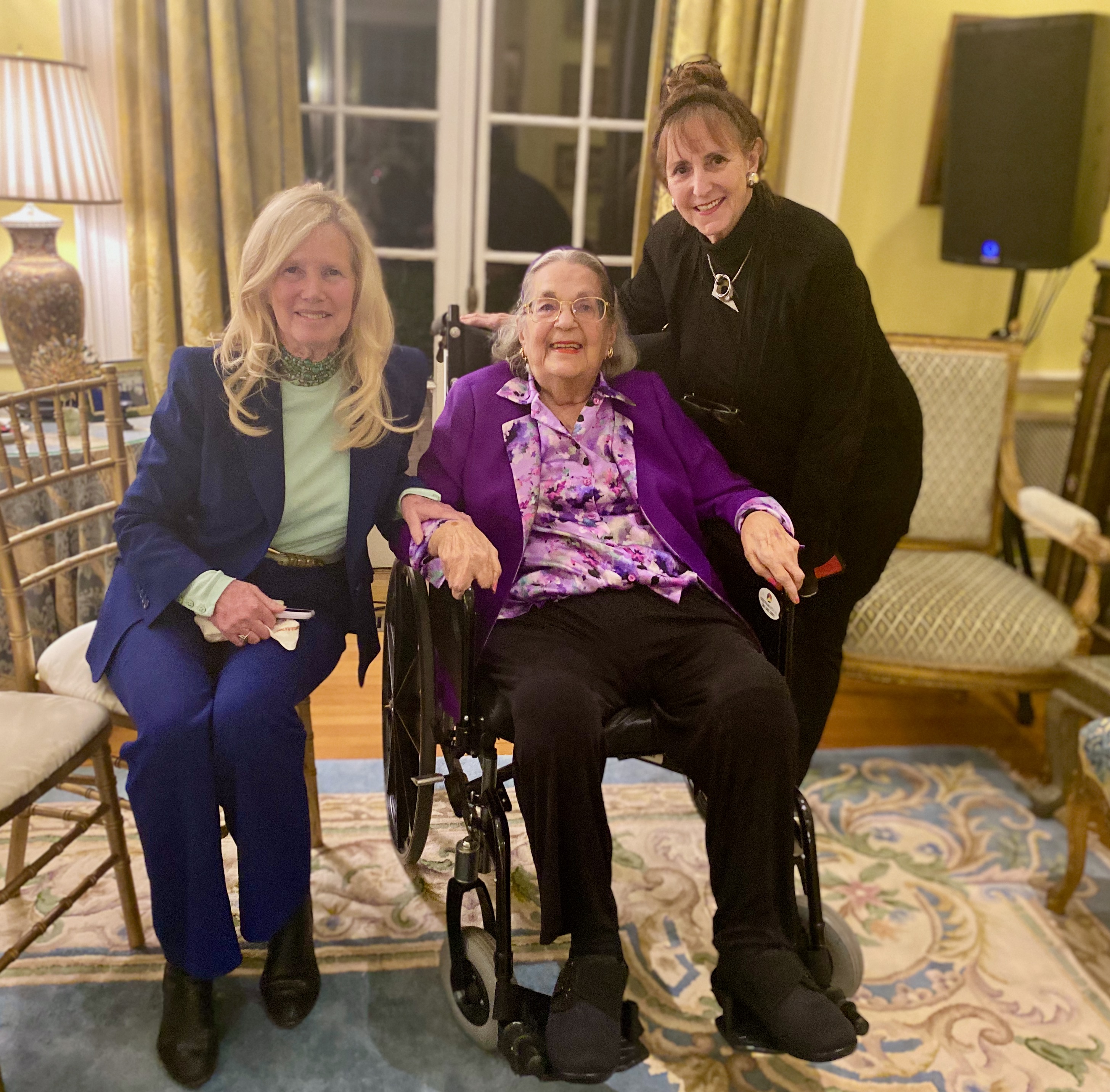
Photo credit: Janet Donovan
“Welcome to my mother Esther Coopersmith’s modest bungalow,” said Jeffrey Coopersmith as he welcomed his friend Liza Mundy. “Her latest book, The Sisterhood: The True Story or The Secret History of Women at the CIA is where Liza vividly describes how women have served and protected the US even when the US did not always serve and protect them. This is a story that many people have waited a very long time to be told, including Nancy Pelosi. I had the opportunity to meet with Speaker Pelosi and I told her about this event and she asked me to share this message with all of you. And I quote, ‘Please thank my dear friend Esther for bringing everybody together as she always does. And Jeffrey, please thank your friend for bringing the public’s attention to this subject because I served on the House Intelligence Committee for 30 years, longer than anyone. I always wanted a book about women in the CIA.’ One day Liza’s book will not be as necessary and that all books about the CIA will also be about women.”
Janet Pitt and Jeffrey Coopersmith
“This book highlights the work of women who were in the agency long before me,” said Abigail Span Berger, (former CIA case officer and current Representative from Virginia) “the women who will continue to serve into the future, the extraordinary work that those women have done and will continue to do. We all have our own sisterhoods within the agency, the women we came in with, the people who believed in us and the women that we believe in. And so to be able to see the stories of those women in this book, whether it’s the specific story of one woman or the themes that so many of us experienced, is absolutely beautiful. And then she talks about the sisterhood the way that so frequently women would find each other and talk to each other and strategize with each other. And sometimes it was of our own doing and sometimes it was because there were moments when the challenges that we face out in that role was unique. I thank Liza once more for telling this extraordinary story. The stories reflected in this book are so real and so true and so important and they need to be told. And so I’m so grateful that this book exists, that there is an opportunity for people to understand some of the adventures, some of the challenges, the absolute creativity and bullishness that you have to have to do this job. So I am delighted to be in this gathering tonight and to be celebrating the, what should I call them, the underestimated women who have used that underestimation to actually excel in the espionage world.”
“There were decades of American history where wives of ambassadors, wives of foreign service officers and wives of case officers were expected to be full unpaid partners,” said author Liza Mundy, “and that the men were evaluated and 25% of their evaluation would be on whether their wives were contributing satisfactorily to the career. And so, although many or most of the women who were hired into the OSS (The Office of Strategic Services (OSS) was the intelligence agency of the United States during World War II) started as clerks and secretaries, and even though they were college graduates, they were professional women, they were evaluated specifically for the ability to withstand the frustration of having their talents underused.”
“In the book, I don’t argue that women are better or more moral or all good at one particular thing, but I do try to show that there are ways in which women’s instincts or women’s trainings certainly add dimensions to intelligence gathering and spy craft in very important and vital ways,” she added. ‘The way in which the sisterhood came about is I knew about the women of the OSS. I wondered what happened to them after, whether women continued to contribute and if so, how. I met with a group of CIA historians in not exactly an undisclosed location, but as sort of a nondescript suburban location. And they told me the accounts of some other groups of women who have played acknowledged roles in the history of the CIA, one of them being the team of women who tracked and identified Aldrich Ames as the mole, the infamous mole, who was passing the identities of assets to the Soviet Union, to the KGB. And those assets were summarily executed.”
Liza Mundy
The high level guest listed included Ambassadors, Congressional members, former CIA operatives and journalists.